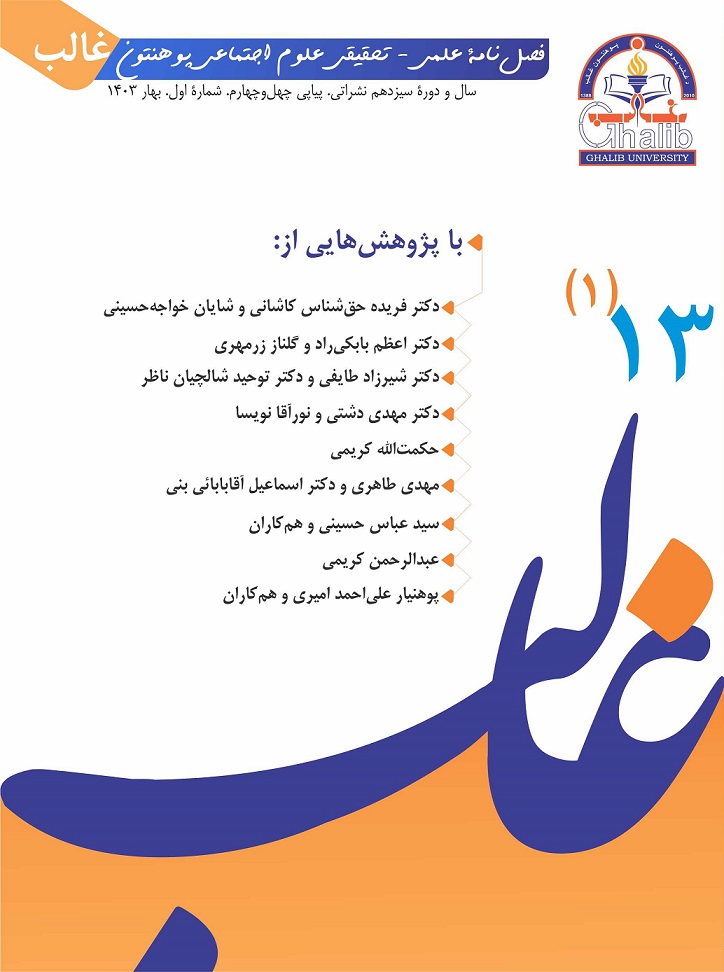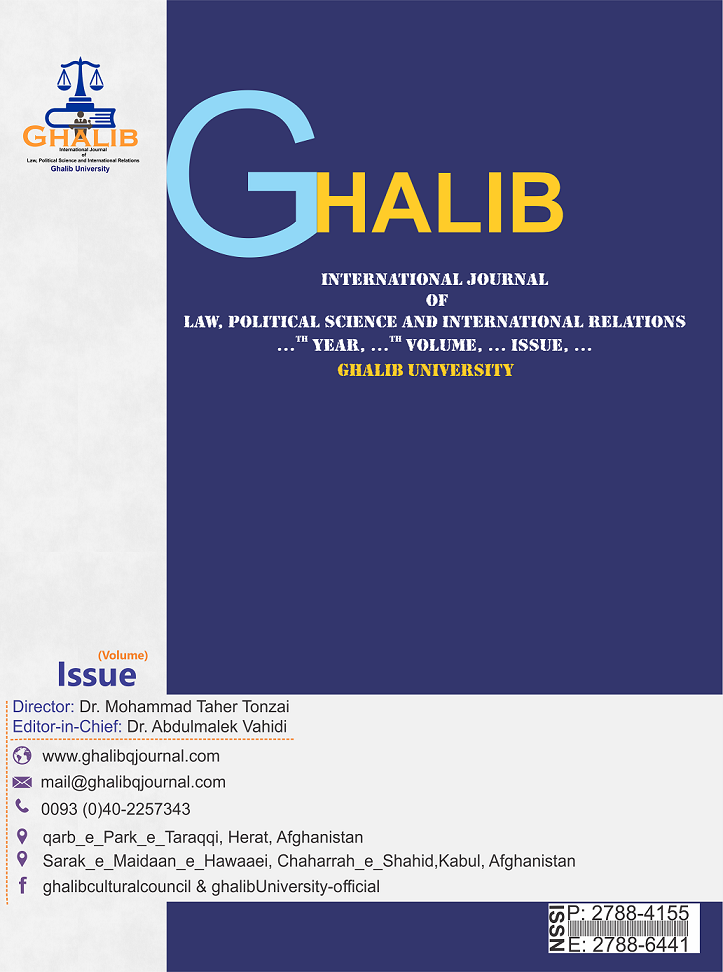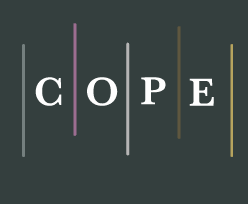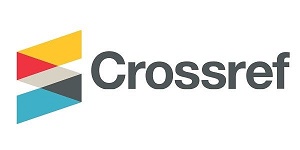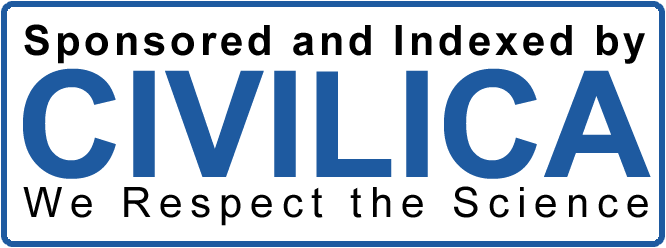Identification of the strategic intents in Iranian public schools
(Case study: Mashhad city)
DOI:
https://doi.org/10.58342/ghalibqj.V.13.I.1.2Keywords:
Strategic Intents, Developing Public Schools, Opportunism, Growth Seeking, Futurism, IranAbstract
what has been felt for years in the field of education planning and management is the evaluation of clear, accurate planning, measurement, strategy and evaluation for the future. In the field of very complex activities that today's organizations determine the influencing factors, the speed of change and transformations, organizations need strategic planning and strategic management and identification of strategic intent in order to achieve long-term success and survival.This article identifies the strategic intents of developing public schools and prioritizing them.The statistical population of current study includes the experts who are aware of the strategic and educational planning, education management and public schools of Iran. Using judgmental sampling, 20 experts were selected as samples.The methodology is a mix of Delphi-survey method. According to the stages of study, using Delphi method, the strategic intents of developing public schools were first identified. Then, through Freidman test, the identified strategic intents were prioritized. The used tools to gather data is researcher made questionnaire. 44 identified strategic intents for developing public schools were categorized in three dimensions of opportunism, growth seeking and futurism. The obtained results of study indicate that 1) prior strategic intents in dimensions of opportunism are “learners’ steps towards their talents”, “attention to the sustainable development” and “providing proper human resources for society”, 2) prior strategic intents in dimension of growth are “moving towards knowledge-based societies”, “the growth of culture, education and research” and “expanding and deepening the culture of research and evaluation” and 3) prior strategic intents in dimension of futurism include “creating the model of developmental education”, “approaching to the global development” and “modern and excellent Islamic civilization”.
References
خلیلی شورینی، سهراب؛ محضری، مهدی. (1393). «شناخت موانع اجرای برنامههای استراتژیک و اولویتبندی آنها». ایران: مجله پژوهشهای مدیریت راهبردی. شمارة 56. 132 - 111. https://www.sid.ir/paper/513723/fa.
دارابی، سلمان؛ نیستانی، محمدرضا و داود میرزاییفر. (1392). «بررسی مقایسهیی میزان کاربست مؤلفههای برنامهریزی استراتژیک در توسعه پایدار آموزش و پرورش شهرهای اصفهان و کرمانشاه». ایران: مجله مطالعات برنامهریزی آموزشی. شماره 4. 101 - 136. https://eps.journals.umz.ac.ir/article_761.html.
رضاییراد، مجتبی؛ زارعیزوارکی، اسماعیل و رضا یوسفیسعیدآباد. (1391). «شناسایی و اولویتبندی عوامل مؤثر بر توسعه مدارس هوشمند». ایران: مجله علوم تربیتی. شماره 18. 120-109. https://www.noormags.ir/view/fa/articlepage/030218.
شایان، حمیدرضا؛ خرمی فرد، مرضیه. (1392). «تبیین شاخصهای عملکردی در طراحی فضاهای بیرونی محیطهای آموزشی با رویکرد توسعه مدارس اجتماعی». ایران: مجله نقش جهان. شماره 3. 12-7. https://www.noormags.ir/view/fa/articlepage/1078675.
شریف، سیدمصطفی؛ آقاسی، اکرم. (1385). «زمینههای تحقق برنامهریزی استراتژیک در آموزش و پرورش (مطالعه موردی استان اصفهان)». ایران: مجله علوم تربیتی و روانشناسی. شماره 3. 90 - 75. https://ensani.ir/fa/article/218943.
صبوری خسروشاهی، حبیب. (1389). «آموزش و پرورش در عصر جهانیشدن؛ چالشها و راهبردهای مواجهه با آن». ایران: فصلنامه مطالعات راهبردی سياستگذاری عمومی. شماره 1. 153 - 196. https://sspp.iranjournals.ir/?_action=article&au=2297&_au.
صدرا، ا. (2017). «الزامات فرهنگی تعالی قدرت بینالمللی جمهوری اسلامی ایران». ایران: مجله مطالعات قدرت نرم. 6 (14). 153 - 165. https://ensani.ir/fa/article/367488/.
کردنائیج، اسداله و همکاران. (1394). «تبیین اهداف استراتژیک تعاملی صنعت بانکداری ایران با استفاده از مفهوم اکوسیستم کسبوکار». ایران: مجلة پژوهشهای مدیریت در ایران. ۱۹ (۴). ۱۳۹-۱۶۰. https://mri.modares.ac.ir/article_ .380.html.
Brown, R. S. (2015). Strategic Intent, Capabilities and Financial Performance: A Study of the Pharmaceutical Industry. Journal of Management Policy and Practice, 16(1), 18. https://www.semanticscholar.org/paper/
Ciszewska-Mlinaric, M. (2016). Foreign Market Knowledge and SME's International Performance: Moderating Effects of Strategic Intent and Time-to-Internationalization. Entrepreneurial Business and Economics Review, 4(4), 51. https://ideas.repec.org/a/krk/eberjl/v4y2016i4p51-66.html
Hamel, G. & Prahalad, C. K. (1989). Strategic intent. Harvard Business Review, 67(3), 63- 76. https://hbr.org/2005/07/strategic-intent
Hamel, G., & Prahalad, C. K. (1994). Competing for the Future. Harvard Business School Press. Boston, MA.
Levy, M., Powell, P., & Worrall, L. (2005). Strategic intent and e-business in SMEs: enablers and inhibitors. Information Resources Management Journal (IRMJ), 18(4), 1-20. https://www.researchgate.net/publication/32116787
Mburu, S. N., & Thuo, J. K. (2015). Understanding the Concept of Strategic Intent. International Journal for Innovation Education and Research, 3(6). Chrome xtension://efaidnbmnnnibpcajpcglclefindmkaj/https://www.irjes.com/Papers/vol4-issue6/G465760.pdf
McGee, J. (2014). Strategic Intent, Wiley Encyclopedia of Management, edited by Professor Sir Cary L Cooper, John Wiley & Sons.
Odita, A., & Bello, A. (2015). Strategic intent and organizational performance: A study of Banks in Asaba Delta State in Nigeria. In Information and Knowledge Management 5, 60-71. chrome-extension://efaidnbmnnnibpcajpcglclefindmkaj/https://core.ac.uk/download/pdf/234671947.pdf
References
Brown, R. S. (2015). Strategic Intent, Capabilities and Financial Performance: A Study of the Pharmaceutical Industry. Journal of Management Policy and Practice, 16(1), 18. (Enlgish).
Ciszewska-Mlinaric, M. (2016). Foreign Market Knowledge and SME's International Performance: Moderating Effects of Strategic Intent and Time-to-Internationalization. Entrepreneurial Business and Economics Review, 4(4), 51. (Enlgish).
Darabi, S., Neyestani, M., and Mirzaeifar, D., (2013). Comparative study of the rate of using strategic planning components in sustainable development of education in Isfahan and Kermanshah, educational planning studies, 2(4), 101-136.( Persian)
Fallah tafti, s., kordnaeich, a., khodadad hosieni, h. & jamali , m.(2015). Explaining interaction strategic objectives of the Iranian banking industry using the concept of business ecosystem. Management reaserch in iran, 19(4),140-159. (Persian)
Hamel, G. & Prahalad, C. K. (1989). Strategic intent. Harvard Business Review, 67(3), 63- 76. (Enlgish).
Hamel, G., & Prahalad, C. K. (1994). Competing for the Future. Harvard Business School Press. Boston, MA.
Khalili-Shourini, Sohrab and Mehdhari, Mehdi (2014). Understanding the obstacles to the implementation of strategic plans and their prioritization, Strategic Management Research, No. 56, 111-132. (Persian)
Levy, M., Powell, P., & Worrall, L. (2005). Strategic intent and e-business in SMEs: enablers and inhibitors. Information Resources Management Journal (IRMJ), 18(4), 1-20. (Enlgish).
Mburu, S. N., & Thuo, J. K. (2015). Understanding the Concept of Strategic Intent. International Journal for Innovation Education and Research, 3(6).
McGee, J. (2014). Strategic Intent, Wiley Encyclopedia of Management, edited by Professor Sir Cary L Cooper, John Wiley & Sons. (Enlgish).
Odita, A., & Bello, A. (2015). Strategic intent and organizational performance: A study of Banks in Asaba Delta State in Nigeria. In Information and Knowledge Management 5, 60-71. (Enlgish).
Rezaei-Rad, Mojtabi, Zarei-Zwarki, Ismail and Yousefi-Saeedabad, Reza (2011). "Identification and prioritization of factors on the development of smart schools", Educational Sciences, No. 18, 109-120. (Persian)
Sabouri Khosroshahi, H., (2010). Education in globalization era; challenges and strategies if comping with it, strategic studies of public policy making, 1(1), 153-196. (Persian)
Sadra, a. (2017). Cultural Requirements for the Excellence of the International Power of the Islamic Republic of Iran. soft power, 6(14), 153-165. (Persian)
Sharif, Seyed Mostafi and Agassi, Akram (2015). Fields of realization of strategic planning in education (case study of Isfahan province), educational sciences and psychology, number 3, 75-90. (Persian)
Shayan, Hamidreza and Khormi Fard, Marzieh (2012). Explanation of performance indicators in the design of the outer spaces of educational environments with the approach of developing social schools, Naqsh Jahan, No. 3, 7-12.(Persian).
Downloads
Published
How to Cite
Issue
Section
License
Copyright (c) 2024 دکتر اعظم بابکیراد،گلناز زرمهری

This work is licensed under a Creative Commons Attribution 4.0 International License.

